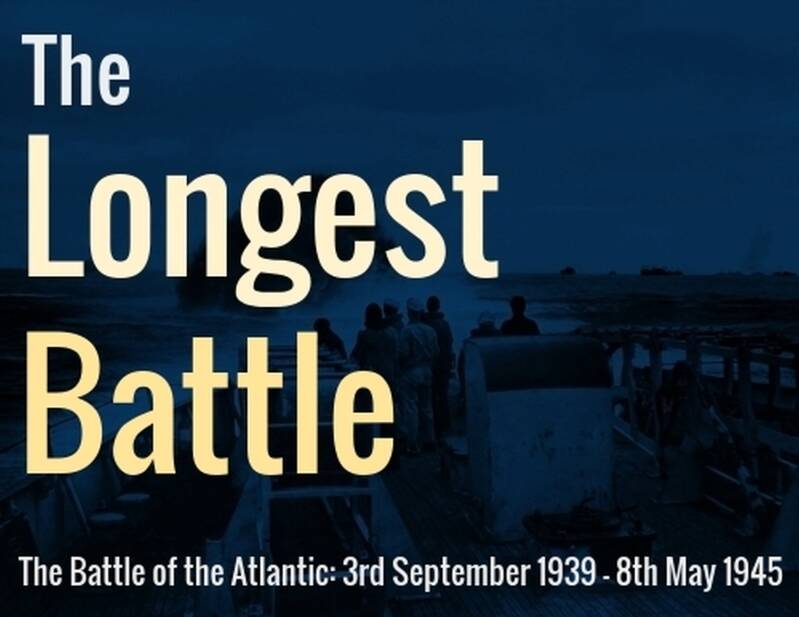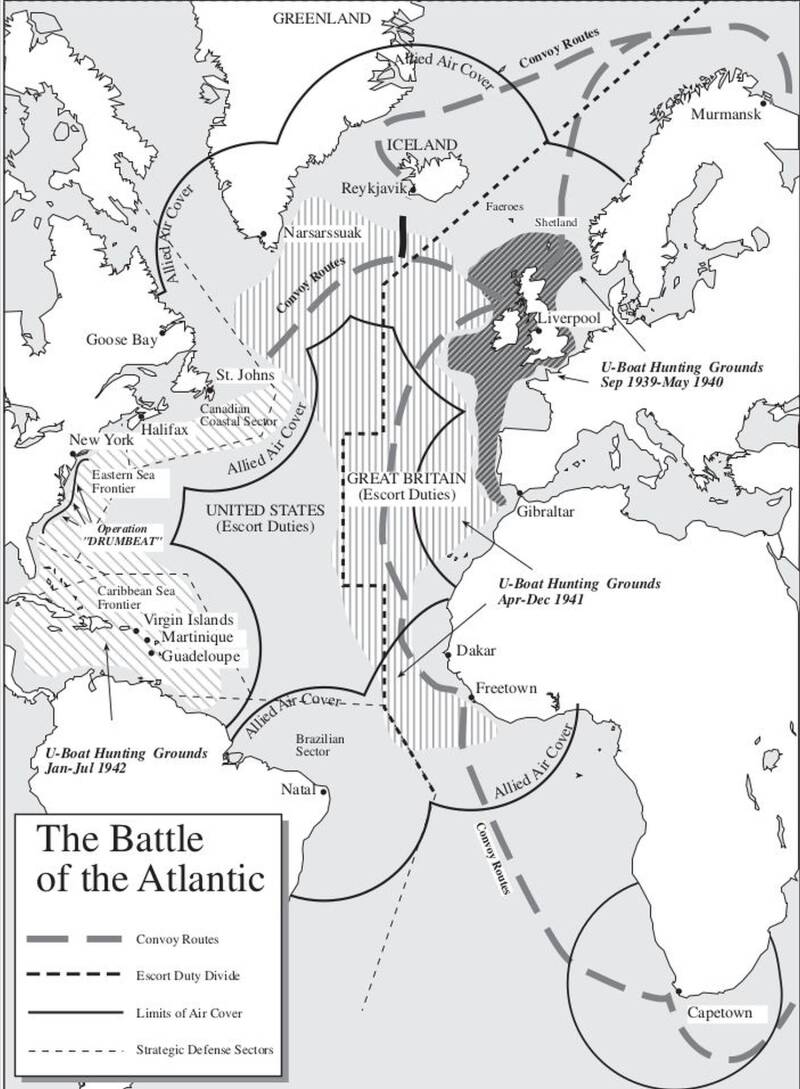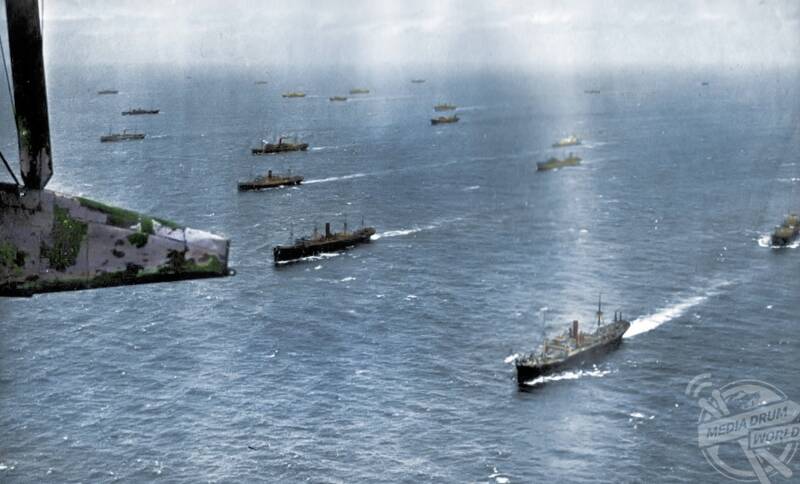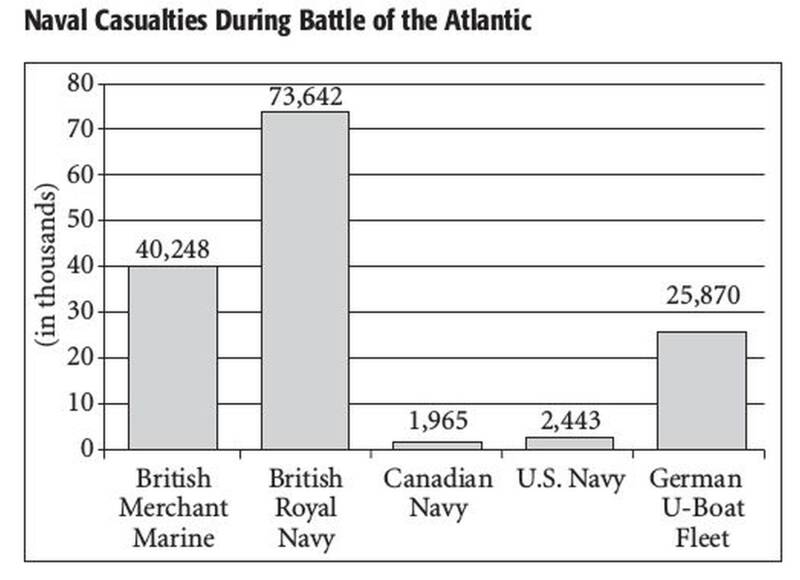
The Atlantic battlefield
One of the most significant naval conflicts in history, the Battle of the Atlantic was the longest-running military operation of World War II, and one of history's most important naval engagements. It began shortly after Germany's invasion of Poland on 1 September 1939 and ended when Germany surrendered on 8 May 1945 after five years of fighting.
The battle took place across thousands of miles of ocean between German-occupied Europe, Great Britain, France, and other Allied nations. It was fought against U-boats and other warships of the German Kriegsmarine (Navy) and Luftwaffe (Air Force) aircraft against the Royal Navy, Canadian Navy, United States Navy, and Allied merchant ships. Convoys, mainly from North America and mainly to Britain and the Soviet Union, were generally protected by the British and Canadian navies and air forces.
These forces were assisted by ships and aircraft from the United States from September 13, 1941. After Italy, an Axis ally of Germany joined the war on June 10, 1940, German submarines were joined by Italian Regia Marina (Royal Navy) submarines.
"Longest, largest and most complex..."
The Battle of the Atlantic has been described as history's "longest, largest, and most complex" naval battle. The start of the campaign coincided with the outbreak of war in Western Europe, and lasted more than five years, until Germany surrendered in May 1945.
It involved thousands of ships in over 100 convoy battles and approximately 1,000 single ship-on-ship clashes over a million square miles of sea. Losses were often high – a reflection of not just the brutality of the combat but also the challenges facing those who had escaped a sinking vessel only to find themselves adrift in an often rough, freezing-cold sea with little chance of rescue in sight.
German battleship Bismark as seen from her sister ship Prinz Eugen in May 1941. In her first engagement with the Royal Navy and one of the major events of the Battle of the Atlantic, the Bismarck sank HMS Hood, after which she was relentlessly pursued until she was eventually sunk by war by British warplanes and ships,
@Paul Reynolds / mediadrumworld.com
A Technological race
The situation was constantly changing, with one side or the other gaining an advantage, often because the countries involved were forced to surrender, had newly joined the war, or even found themselves changing sides during it.
Additionally, new weapons, tactics, countermeasures, and equipment were also continually evolving and being developed by both sides as they each sought to gain an advantage over one another. It was a technological race as much as a military conflict.
Supply and demand
Being an island nation that depended significantly on imports and the only member of Western Europe remaining in the war by 1940, Britain needed supplies from the sea to survive and continue fighting.
To achieve this, Britain required more than a million tonnes of imported resources each week. The Battle of the Atlantic was essentially a battle of tonnes, with the Allies trying to resupply Britain while the Axis sought to halt the flow of merchant ships that allowed Britain to continue fighting.
An Atlantic Convoy underway as seen from a Royal Airforce Short Sunderland flying boat, 1943.
@Royston Leonard / mediadrumworld.com
Defeating the U-boats
Beginning in 1942, the Axis also sought to prevent the build-up of Allied supplies and equipment in the British Isles in preparation for the invasion of occupied Europe. The defeat of the U-boat menace was a prerequisite for pushing back the Axis in Western Europe.
The battle resulted in a strategic victory for the Allies - the German blockade was broken - but at a high cost: 3,500 merchant ships and 175 warships were sunk in the Atlantic for the loss of 783 U-boats (the majority of Type VII submarines) and 47 German surface warships, including 4 battleships (Bismarck, Scharnhorst, Gneisenau, and Tirpitz), 9 cruisers, 7 raiders, and 27 destroyers.
Of the U-boats, 519 were sunk by British, Canadian, or other allied forces, while 175 were destroyed by American forces; 15 were destroyed by the Soviets and 73 were destroyed by their crews before the end of the war for various reasons.
The United States Coast Guard Cutter Spencer dropping depth charges. At the outbreak of WWII, coast guard vessels served under US Navy command. During the Battle of Atlantic she acted as a convoy escort, hunting German U-boats, and was responsible for sinking U-175 in 1943.
@Paul Reynolds / mediadrumworld.com
Churchills greatest fear
The Allies gradually gained the upper hand, defeating German surface raiders in late 1942 and defeating U-boats in mid-1943, although losses due to U-boats continued until the end of the war.
British Prime Minister Winston Churchill later wrote "One thing that really scared me during the war was the U-boat danger. I was even more worried about this war than I was about the glorious air war called 'Battle of Britain'."




